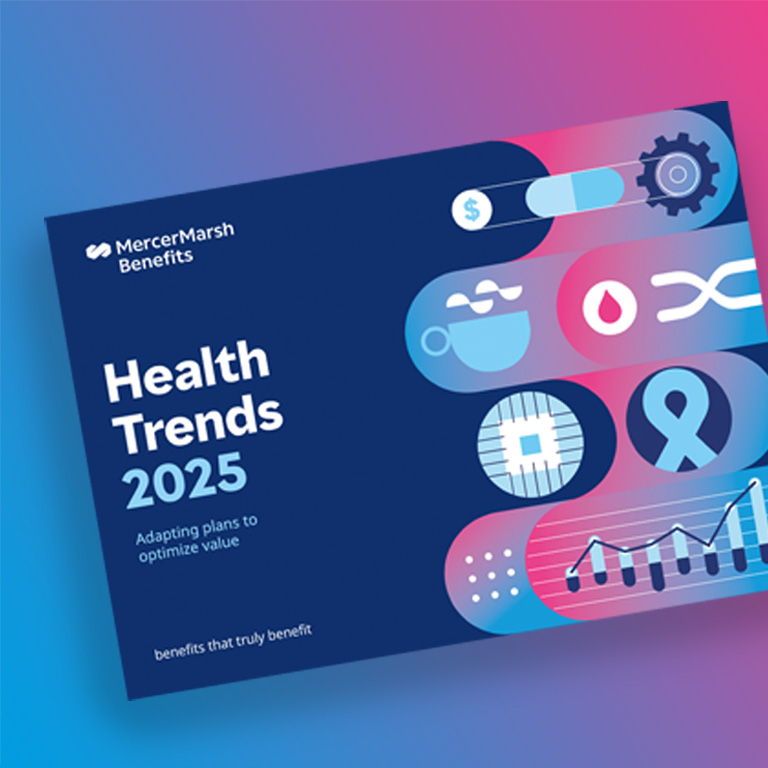
By Katherine Gobbi ,
Managing Director, Head of Recovre
27/07/2023 · 5 minute read
According to MMB’s Health on Demand 2023 report, which captures the views of more than 17,500 employees in 16 countries about their health and wellbeing, almost half of all employees (47%) surveyed reported feeling stressed every day. The top three risk factors for burnout at work were identified as work pressures (54%), poor leadership (39%), and toxic culture (37%).[1]
According to the World Health Organisation (WHO),[2] burnout is a workplace syndrome resulting from chronic, unmanaged, workplace stress, and has three characteristics:
While terms such as ‘burnout’ and ‘stress’ are often used interchangeably, they are distinct – albeit, related – concepts. Stress gets a bad rap, but it is often considered both normal and healthy. Over time, our exposure to normal levels of stress can in fact help increase our resilience and capacity to cope with future challenges. Burnout, on the other hand, is the result of unrelenting, unmanageable, and chronic stress, which keeps our stress response in overdrive and, as a result, impairs our performance, including our ability to handle stress in the future.
While burnout is technically considered a workplace-specific phenomenon, we have also seen burnout arise in people’s lives outside of work – particularly in relation to other significant and demanding responsibilities involving caregiving of children or elderly parents.
There are also a number of personal and lifestyle factors which can increase the risk of burnout:[3]
It’s possible to distinguish between three different types of burnout:[4]
We know that burnout can have different causes, how burnout plays out from a behavioural perspective can also differ between individuals. The key is recognising if there has been a significant change in how someone is engaging with their work, colleagues and clients, compared to usual.
Someone with the overloaded subtype of burnout may try and deal with the elevated demands placed upon them by doing more, in other words, engaging the ‘fight’ response; this may look like working excessive hours over a long period of time and always being ‘online’. This type of burnout can often impact high achievers.
Others may take ‘flight’, avoiding tasks and challenges they would normally be enthusiastic about.
Under-challenged or ‘neglected’ presentations may appear as ‘apathy’ and ‘withdrawal’. They may lack motivation towards usual work tasks as a result of feeling bored and/or unappreciated.
There are a number of physical and mental signs of burnout we can look out for in ourselves, and other:
It is important to remember that while we can engage a number of strategies to improve our ability to manage stress and ‘bounce back’, burnout by definition also involves a workplace environment component which is perpetuating the chronic stress.
The insights from MMB’s Health on Demand 2023 report highlight that nearly half of all employees report feeling stressed in their everyday life. However, there is also evidence to show that nearly 70% of employees believe their employer would support them in a time of need. These findings also reveal that employees who believe their employer cares about their health and wellbeing are much more likely to thrive – and feel more positive about their health, wealth and career.[5]
With this in mind, managing burnout requires a two-pronged approach to bolster our own coping skills and well as make changes in the work environment.
[1] Mercer (2023). Addressing employee stress is key to a comprehensive benefits strategy, according to Mercer Marsh Benefits. https://www.mercer.com/about/newsroom/health-on-demand-2023-survey-report/ Accessed 18/07/2023.
[2] World Health Organisation (2023). Burn-out an "occupational phenomenon": International Classification of Diseases. https://www.who.int/news/item/28-05-2019-burn-out-an-occupational-phenomenon-international-classification-of-diseases Accessed 30/06/2023.
[3] Hlaďo, P., et al (2020). Work ability among upper-secondary school teachers: Examining the role of burnout, sense of coherence, and work-related and lifestyle factors. International journal of environmental research and public health, 17(24), 9185.
[4] Farber, B. A. (1990). Burnout in psychotherapist: incidence, types, and trends. Psychother. Private Pract. 8, 35–44. doi: 10.1300/J294v08n01_07
[5] Mercer (2023). Addressing employee stress is key to a comprehensive benefits strategy, according to Mercer Marsh Benefits. https://www.mercer.com/about/newsroom/health-on-demand-2023-survey-report/ Accessed 18/07/2023.
This publication is created and published for informational purposes only. It is not intended to be a substitute for professional medical advice and should not be relied on as health or personal advice. Always seek the guidance of your doctor or other qualified health professional with any questions you may have regarding your health or a medical condition. LCPA 23/294
13/11/2024

05/11/2024

13/10/2024